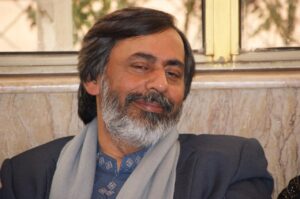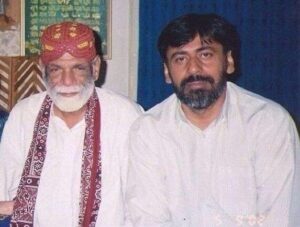Impact on person with hearing disability
Introduction
Hearing disability, a prevalent condition, affects millions worldwide, posing significant challenges in communication, social interaction, and overall quality of life. This comprehensive guide delves into the nuances of hearing disabilities, elucidating their types, causes, and effective management techniques, while also introducing an innovative therapeutic approach, The Ultimate Remedy, which offers a unique audio-based intervention.
Understanding Hearing Disability
Hearing disability, often misunderstood, encompasses a spectrum of conditions ranging from mild hearing impairment to profound deafness. This variation in hearing loss significantly affects an individual’s ability to perceive and process sound, impacting communication and social interactions.
Types and Degrees of Hearing Loss
- Conductive Hearing Loss: This occurs when sound waves are impeded in their journey through the outer or middle ear. It can often result from blockages, infections, or anatomical abnormalities.
- Sensorineural Hearing Loss: Stemming from damage to the inner ear or the auditory nerve, this type is often permanent and can be caused by aging, noise exposure, or genetic predisposition.
- Mixed Hearing Loss: A combination of conductive and sensorineural hearing loss.
The degree of hearing loss is typically categorized as mild, moderate, severe, or profound, influencing the type and extent of intervention required.
Causes of Hearing Disability
Understanding the causes is crucial for prevention and targeted treatment:
- Genetic Predisposition: Inherited traits can predispose individuals to hearing impairments.
- Age-Related Changes: Presbycusis, or age-related hearing loss, is a common cause, attributed to the degeneration of inner ear structures.
- Noise-Induced Damage: Prolonged exposure to high-decibel environments can irreversibly damage the inner ear cells.
- Infections and Illnesses: Certain viral or bacterial infections, as well as chronic illnesses like diabetes, can contribute to hearing loss.
Comprehensive Management Strategies
Effectively managing a hearing disability involves a multi-faceted approach tailored to the individual’s needs.
Technological Aids
- Hearing Aids: Customizable devices that amplify sound, suitable for various types of hearing loss.
- Cochlear Implants: Recommended for individuals with severe to profound sensorineural hearing loss, these devices bypass damaged parts of the ear and directly stimulate the auditory nerve.
Communication Strategies
- Sign Language: An essential communication tool for many, especially in the Deaf community.
- Speech-to-Text Applications: Technology aids in real-time transcription of conversations.
Lifestyle Adaptations
- Acoustic Modifications: Using sound-absorbing materials at home or work to reduce background noise.
- Regular Audiological Care: Monitoring hearing health and making necessary adjustments to hearing aids or treatment plans.
The “Ultimate Remedy” An Alternative Approach
The Ultimate Remedy is an innovative audio therapy specifically designed to support individuals with hearing disabilities. It leverages the therapeutic potential of sound frequencies combined with the power of positive intentions to enhance overall well-being.
Methodology
- Targeted Audio Frequencies: Designed to potentially stimulate auditory processing and promote a sense of calm.
- Intentional Healing: Incorporates affirmations and mindfulness practices to bolster mental and emotional health.
Implementation
- Accessibility: The therapy is available for download on designated websites.
- Guided Listening: Users are advised to follow structured listening schedules as per the instructions provided.
- Continuous Support: For queries or guidance, contact help@mastmasthealers.com.
Happy Patients
Years since day one
%
Satisfaction
Testimonial
How to Listen to the Ultimate Remedy:
Download the Ultimate Remedy audio from our website or app. It’s free and accessible to all.
- Choose a quiet, comfortable space where you won’t be disturbed.
- Close your eyes and visualize yourself in the presence of your higher power or the essence of the universe.
- Listen to the audio with great concentration and closed eyes.
- After the audio is finished, open your eyes and take half a glass of water.
- Close your eyes again and say “your name” or a word that represents your belief (such as “God”, “Universe”, or “Love”) three times in your heart.
- Drink the water with closed eyes in three sips.
- For optimal results, it’s recommended to listen to the Ultimate Remedy three times a day (morning, evening, and before sleeping) for seven consecutive days.
About the Creator – Syed Safdar Hussain Bukhari
Introduction and Early Life
Syed Safdar Hussain Bukhari, also known as Kakian Wali Sarkar, was a unique example of kindness, devotion, and tenacity. Born on May 6th, 1940, he dedicated his life to serving humanity and providing relief to those suffering from various ailments.

Social Work and Spiritual Journey
Between 1960-1980, he engaged in social work by undertaking road repairs, establishing schools, and arranging medical supplies in Lilla Town. In 1990, he left his ancestral home and family wealth to move to Lahore, where he comforted the depressed and saddened through mystic dance and music.
The Ultimate Remedy
In 1998, Baba Bukhari’s research led to the discovery of “The Ultimate Remedy,” a blessed audio that he believed could cure physical, psychological, spiritual, and supernatural problems. The remedy involved listening to the audio three times a day for seven consecutive days, followed by a specific water ritual. This method claimed to cure various ailments, including coronavirus, AIDS, cancer, drug addiction, worldly problems, and psychological issues.
Legacy and Death
Baba Bukhari’s research and unconditional love left a lasting impact on humanity, providing positive thinking, peace of mind, health, fearless life, and an example of love and compassion. He passed away on February 8th, 2005, leaving behind a legacy of healing through “The Ultimate Remedy.”

His spiritual successor is Syed Baba Jaan
According to Baba Bukhari (RA), his spiritual successor is Mr. Shakir Uzair, also known as Syed Baba Jaan . As the chosen heir to Baba Bukhari’s spiritual legacy, Syed Baba Jaan carries forward the teachings and practices that have been passed down through generations. Dedicated to serving humanity and promoting healing, Mr. Shakir Uzair continues to spread the message of love, compassion, and the transformative power of the Ultimate Remedy to help countless individuals in their journey towards holistic wellness and personal growth.

